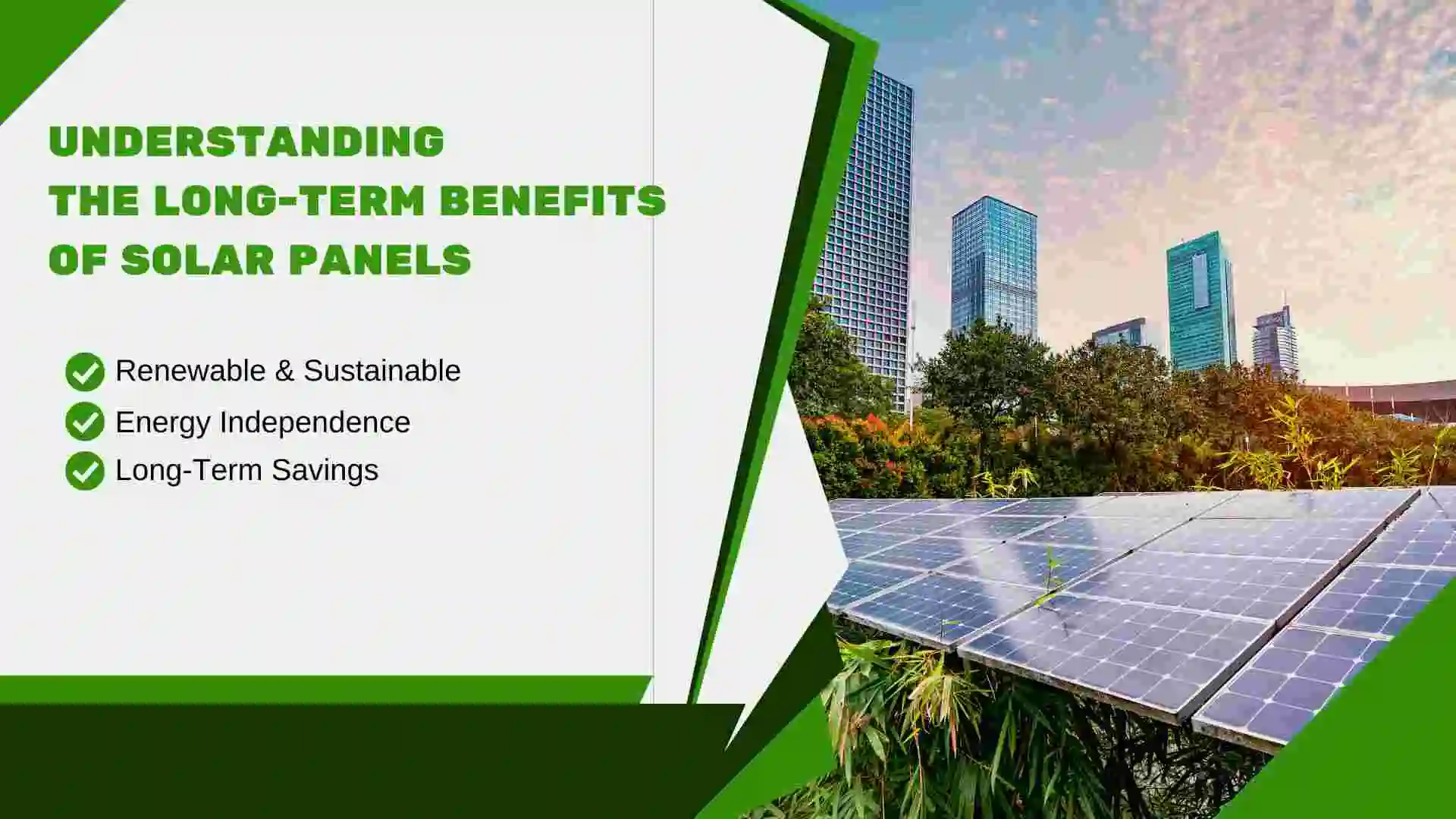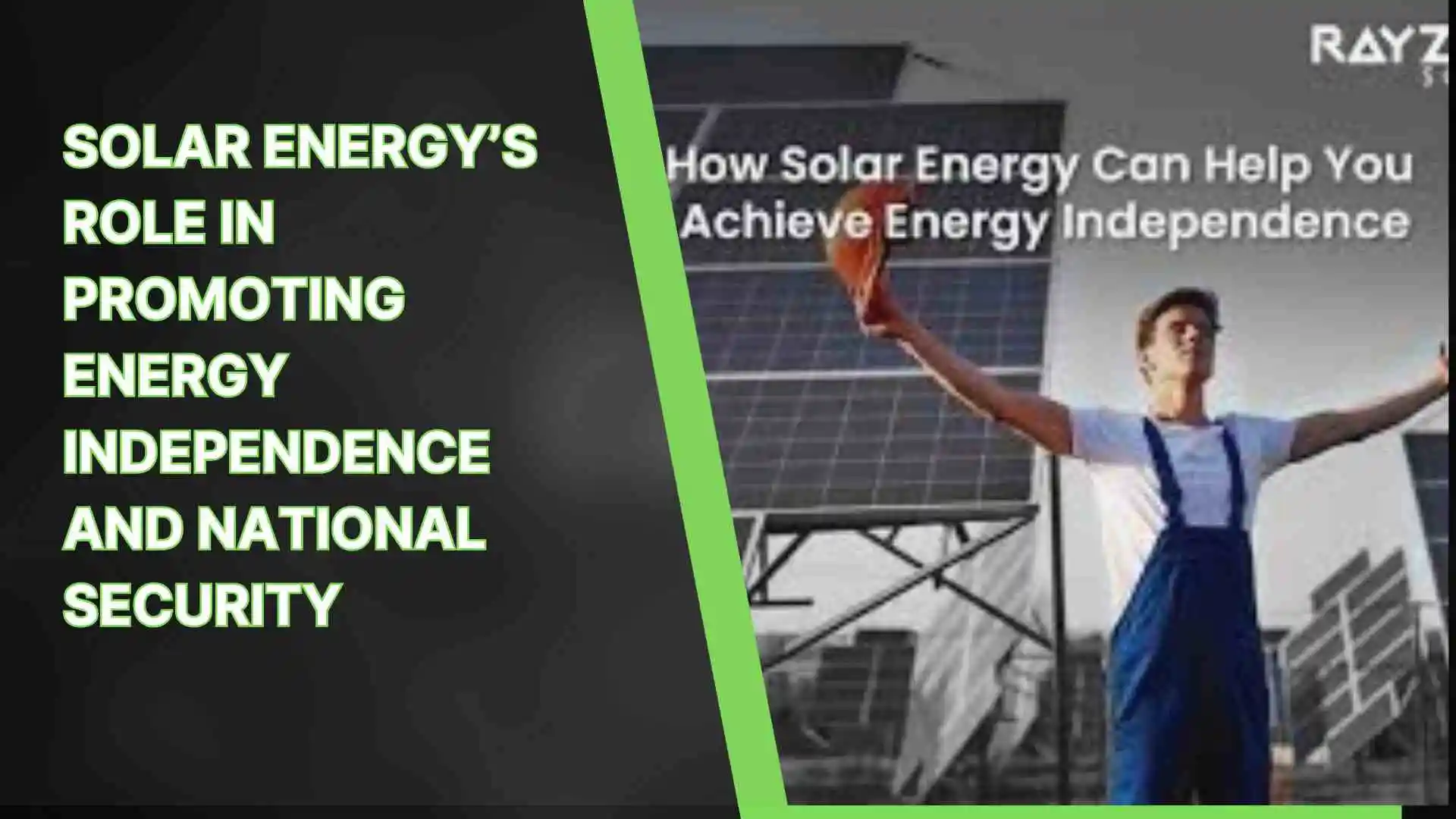Unlocking the Full Potential of Solar Energy – Top Benefits for Homeowners in 2025
As energy costs continue to rise and environmental concerns grow, many homeowners are looking for ways to reduce their energy bills and contribute to a greener planet. Solar energy has emerged as a powerful solution, offering a way to save money while reducing your carbon footprint. In 2025, solar power has become more affordable, efficient, and accessible than ever before. According to the U.S. Department of Energy, the average cost of solar panels has dropped by over 70% in the past decade, making solar energy a practical option for more households.

The benefits of solar energy go beyond just financial savings. With advancements in solar technology, homeowners can now generate their own clean energy, reduce dependence on fossil fuels, and even increase the value of their property. From lower electricity bills to government incentives, solar power offers a variety of advantages. Whether you’re looking to protect the environment, save money, or increase your home’s value, switching to solar energy can provide lasting benefits for both your wallet and the planet.
If you want to know complete details about battery storage system then please visit Solar Energy Battery Storage.
Why Switch to Solar Energy? A Comprehensive Guide for Homeowners
Solar energy is becoming a popular choice for homeowners in 2025 due to its affordability and environmental benefits. The cost of solar panels has dropped significantly over the years, making it more accessible for homeowners to reduce their electricity bills. With solar power, you can generate your own clean energy while lowering your reliance on expensive, nonrenewable sources.

In addition to saving money, solar panels can increase your home’s value. Many homeowners also benefit from government incentives that help cover installation costs. Switching to solar offers long-term savings, environmental benefits, and potential financial gains, making it a smart decision for any homeowner today.
Top Solar Energy Benefits You Need to Know for 2025
In 2025, solar energy offers several key benefits that can positively impact homeowners. One of the most significant advantages is the reduction in electricity bills, as solar panels allow you to generate your own energy. With advancements in technology, solar power systems are more efficient, meaning you can produce more energy even in smaller spaces.
Additionally, solar energy helps reduce your carbon footprint, contributing to a cleaner, greener environment. Homeowners can also take advantage of government incentives, making solar installation more affordable than ever. These benefits make switching to solar a win-win for both your finances and the planet.
| Year | Electricity Bill Without Solar ($) | Electricity Bill With Solar ($) | Savings ($) |
|---|---|---|---|
| Year 1 | 1,200 | 800 | 400 |
| Year 2 | 1,200 | 750 | 450 |
| Year 3 | 1,200 | 700 | 500 |
| Year 4 | 1,200 | 650 | 550 |
| Year 5 | 1,200 | 600 | 600 |
How Solar Power Can Save You Money – Financial Benefits Explained
Solar power offers significant financial benefits for homeowners, especially in 2025. By switching to solar energy, you can drastically reduce your monthly electricity bills, with many households saving hundreds of dollars each year. The average solar installation can pay for itself in 5-7 years, after which the energy generated is essentially free.

Additionally, solar power increases your home’s value, making it a smart investment. Homes with solar panels sell for more and are more attractive to potential buyers. With government incentives, tax credits, and rebates, the initial installation cost of solar panels is lower than ever, making solar energy an affordable option for homeowners seeking long-term savings.
Environmental Impact – How Solar Energy Contributes to a Greener Future
Solar energy helps reduce carbon emissions and fight climate change. A typical 6kW solar system can cut carbon dioxide emissions by about 100,000 pounds over its lifetime. This is equivalent to planting over 2,000 trees.
Solar power also reduces the need for fossil fuels like coal and natural gas. By using clean, renewable energy, solar energy helps protect the environment and conserve natural resources. This shift to solar is crucial for a cleaner, greener future.
| Energy Source | Carbon Emissions per Year (lbs) | Equivalent to | Annual CO2 Reduction (lbs) |
|---|---|---|---|
| Traditional Energy (Coal) | 10,000 | Driving a car for 11,000 miles | 10,000 |
| Traditional Energy (Natural Gas) | 5,000 | Planting 115 trees | 5,000 |
| Solar Energy | 0 | No emissions | -100,000 (over 25 years) |
Reducing Your Carbon Footprint with Solar Power
Solar power is one of the most effective ways to reduce your carbon footprint. By using clean, renewable energy from the sun, you eliminate the need for fossil fuels like coal and natural gas, which are major contributors to greenhouse gas emissions. According to the U.S. Department of Energy, switching to solar energy can reduce your household’s carbon footprint by up to 80%.

Over the lifespan of a solar system, this reduction can amount to thousands of pounds of carbon dioxide being prevented from entering the atmosphere. As more homeowners choose solar energy, the collective impact can significantly help in the fight against climate change, creating a greener, cleaner world for future generations.
Solar Energy and Its Role in Combating Climate Change
Solar energy helps fight climate change by replacing fossil fuels with clean, renewable power. Unlike coal and oil, it produces no harmful greenhouse gases. This reduction in emissions is crucial for limiting global warming.

As more people adopt solar energy, it reduces our reliance on polluting energy sources. This shift is vital for slowing climate change and creating a sustainable future.
The Long-Term Financial Benefits of Solar Energy
Solar energy offers significant long-term financial benefits for homeowners. After the initial installation, solar systems require minimal maintenance and can drastically reduce your electricity bills. Over the lifespan of a solar panel system, typically 25 to 30 years, homeowners can save tens of thousands of dollars in energy costs.

In addition to lower energy bills, solar energy increases your home’s value. Studies show that homes with solar panels sell for more than those without. With government incentives, tax credits, and rebates available in 2025, installing solar is a financially smart decision that continues to provide savings year after year.
Lower Utility Bills – How Solar Energy Pays Off Over Time
Solar energy helps reduce utility bills by allowing homeowners to generate their own electricity. With a properly installed system, many homeowners can save hundreds of dollars annually on their electricity costs. In fact, over the first 5 to 10 years, the savings often cover the cost of the solar installation.
As energy prices rise, the savings continue to grow, and once the system is paid off, the electricity generated is essentially free. Over the lifespan of the solar panels, typically 25 to 30 years, homeowners can save tens of thousands of dollars, making solar energy a smart investment in the long run.
| Year | Bill Without Solar ($) | Bill With Solar ($) | Annual Saving ($) | Cumulative Saving ($) |
|---|---|---|---|---|
| Year 1 | 1,200 | 800 | 400 | 400 |
| Year 2 | 1,200 | 750 | 450 | 850 |
| Year 3 | 1,200 | 700 | 500 | 1,350 |
| Year 4 | 1,200 | 650 | 550 | 1,900 |
| Year 5 | 1,200 | 600 | 600 | 2,500 |
| Year 6 | 1,200 | 600 | 600 | 3,100 |
| Year 7 | 1,200 | 600 | 600 | 3,700 |
| Year 8 | 1,200 | 600 | 600 | 4,300 |
| Year 9 | 1,200 | 600 | 600 | 4,900 |
| Year 10 | 1,200 | 600 | 600 | 5,500 |
Federal and State Incentives for Solar Installation in 2025
Homeowners can save money through federal and state solar incentives. The Federal Solar Tax Credit offers 30% off the cost of solar panel installation. This credit is available until 2032, making solar more affordable for many. States also provide incentives like property tax exemptions and rebates.
For example, California and Michigan offer property tax exemptions for solar installations. Many states also have net metering programs, allowing homeowners to sell excess energy. These incentives help make solar energy a smart, cost-saving investment.
| Incentive | Details | Eligibility | Expiration |
|---|---|---|---|
| Federal Solar Tax Credit | 30% of installation cost can be claimed on taxes | All homeowners | Available until 2032 |
| California Property Tax Exemption | Excludes added value of solar systems from property tax assessments | Homeowners in California | Ongoing |
| Michigan Property Tax Exemption | Exempts solar systems up to 150 kW from property tax assessments | Homeowners in Michigan | Ongoing |
| Net Metering | Allows homeowners to sell excess solar energy back to the grid, reducing electricity bills | Varies by state | Ongoing |
| State Solar Rebates | Direct rebates to reduce the upfront cost of solar installations (varies by state) | Varies by state | Ongoing |
Solar Energy and Property Value – Boost Your Home’s Worth
Installing solar panels can significantly increase your home’s market value. In 2025, homes with solar systems sold for an average of 6.9% more than comparable homes without solar, translating to approximately $25,000 to $29,000 in added value . This increase is attributed to the long-term energy savings and the growing demand for energy-efficient homes.
The impact on property value varies by location. For instance, in Seattle, homes with solar panels sold for 9.3% more than those without, while in California, the increase was 5.4% . Factors such as local electricity rates, state incentives, and the home’s energy efficiency play crucial roles in determining the added value.
| State | Average Increase in Home Value | Notes |
|---|---|---|
| Washington | 9.3% | Highest increase observed in the study. |
| California | 5.4% | Reflects strong solar incentives and high electricity rates. |
| National Avg. | 6.9% | Represents the overall average increase across various states. |
This table illustrates how the addition of solar panels can enhance property value, with variations depending on regional factors.
How Solar Energy Supports Economic Growth
Solar energy drives economic growth by creating thousands of jobs in manufacturing and installation. In 2025, the U.S. solar industry is expected to employ over 350,000 people, fueling local economies.

Solar also lowers energy costs for businesses and homeowners, allowing them to invest in other areas. As demand for clean energy grows, innovation and economic growth continue to thrive, making solar a key player in building a stronger economy.
Job Creation Through Solar Power – Strengthening Local Economies
Solar power is a key driver of job creation, providing numerous opportunities in manufacturing, installation, and maintenance. In 2025, the solar industry is expected to employ over 350,000 people in the U.S. alone. These jobs are spread across various sectors, from technicians who install solar panels to engineers developing new technologies.
As the demand for solar energy continues to grow, more jobs are being created at the local level. This helps stimulate local economies by increasing employment opportunities and generating additional income. The solar industry not only supports green energy goals but also provides sustainable job growth, benefiting both workers and communities.
| Job Sector | Estimated Jobs in 2025 | Description |
|---|---|---|
| Installation and Maintenance | 120,000 | Jobs for solar panel installers, electricians, and maintenance technicians. |
| Manufacturing | 80,000 | Roles in the production of solar panels, inverters, and other equipment. |
| Research and Development | 50,000 | Jobs for engineers and scientists working on solar technology innovations. |
| Sales and Marketing | 30,000 | Jobs in sales, marketing, and customer support for solar companies. |
| Other Roles | 70,000 | Includes administrative, legal, and policy-related jobs in the solar sector. |
Solar Energy’s Role in Promoting Energy Independence and National Security
Solar energy plays a critical role in reducing dependence on foreign energy sources, helping promote energy independence. By harnessing domestic, renewable energy, countries can lessen their reliance on imported oil and gas, which often come from unstable regions. In 2025, the U.S. is expanding its solar capacity, strengthening its energy security and reducing vulnerabilities associated with global energy market fluctuations.

Moreover, solar energy contributes to national security by diversifying the energy grid. With solar power, communities are less reliant on centralized, vulnerable power sources, making the energy infrastructure more resilient. As more homes, businesses, and military bases adopt solar, the nation moves toward a more secure, sustainable energy future.
Solar Energy in 2025 – The Latest Benefits and Innovations
In 2025, solar energy continues to evolve, offering homeowners and businesses more efficient and cost-effective solutions. Advancements in solar technology have led to increased energy savings and greater accessibility.
One notable innovation is the development of ultra-thin, flexible perovskite solar cells. These cells are lightweight and can be integrated into various surfaces, including clothing and portable devices, providing energy in diverse applications. For instance, Japan is investing $1.5 billion to commercialize these cells, aiming to generate energy equivalent to 20 nuclear power plants by 2040.
Additionally, the integration of solar panels into building materials, known as Building-Integrated Photovoltaics (BIPV), is gaining momentum. This approach allows structures to generate their own electricity, reducing reliance on external power sources and lowering energy costs.
| Innovation | Description | Benefit |
|---|---|---|
| Perovskite Solar Cells | Lightweight, flexible solar cells that can be integrated into various surfaces. | Increased versatility in applications (e.g., wearable devices, portable power). |
| Building-Integrated Photovoltaics (BIPV) | Solar panels integrated directly into building materials (e.g., windows, roofs). | Generates energy directly from buildings, reducing energy bills. |
| Solar Paints | Paint that generates electricity from sunlight, applied like regular paint. | Makes solar power accessible for more surfaces, reducing installation costs. |
| Solar Storage Integration | Solar energy systems paired with advanced battery storage to store excess power. | Increases energy independence by allowing solar power use even when the sun isn’t shining. |
| Smart Solar Grid Integration | Solar systems that communicate with the grid for real-time energy distribution. | Optimizes energy use and enhances grid stability. |
Technological Advancements Making Solar Energy More Efficient and Accessible
Solar energy technology is more efficient and accessible than ever before. Perovskite tandem solar cells now exceed 30% efficiency, offering a lightweight and cost-effective solution for solar energy. These cells can be integrated into various surfaces, including windows and walls.

Flexible solar panels are also making solar energy more versatile. They can be applied to curved surfaces and are ideal for portable uses like wearable electronics and mobile chargers. Additionally, smart solar systems using AI and IoT technologies help optimize energy production, making solar power more efficient and cost-effective. These innovations are driving the global adoption of solar energy.
How Smart Solar Solutions Can Enhance Your Home’s Energy Use
Smart solar solutions are revolutionizing the way homeowners manage their energy use. By integrating smart meters and energy management systems, you can monitor your energy consumption in real time, making it easier to optimize solar energy use. These systems help homeowners track how much energy is being generated and used, allowing them to adjust their usage to maximize savings.
Additionally, solar batteries work in tandem with smart systems to store excess energy for later use, ensuring you always have power when needed. With smart thermostats and appliances that sync with your solar system, you can further reduce energy waste and improve efficiency. These smart solutions offer complete control over your home’s energy use, leading to lower bills and a more sustainable lifestyle.
Get the Most Out of Solar Energy – Tips and Best Practices
To get the most out of your solar energy system, start with proper installation. Ensure that your panels are positioned at the ideal angle and location to capture maximum sunlight. Clean your panels regularly to avoid dirt buildup and check for any shading that could reduce performance.
Using a solar battery is another great way to increase your energy savings. It stores excess energy for use at night or during cloudy days. Additionally, track your energy use and try to consume more power when your panels are generating the most electricity.
| Tip/Practice | Description | Benefit |
|---|---|---|
| Proper Installation | Install solar panels at the optimal angle and location. | Maximizes sunlight exposure and energy production. |
| Regular Cleaning and Maintenance | Clean panels regularly and check for shading or obstructions. | Ensures consistent panel efficiency and performance. |
| Use Solar Batteries | Store excess energy for later use, especially during cloudy days or nighttime. | Maximizes energy use and reduces reliance on the grid. |
| Monitor Energy Consumption | Use energy management systems to track energy production and usage. | Reduces waste and cuts energy costs. |
How to Maximize Solar Energy Efficiency for Your Home
To get the most out of your solar energy system, start by optimizing your solar panel setup. Ensure they are installed in a location that receives the most sunlight throughout the day. Regular cleaning of your panels is also crucial, as dirt, leaves, and other debris can block sunlight and reduce efficiency.
Next, invest in a solar battery to store excess energy for use during cloudy days or at night. This allows you to make the most of the solar energy you generate, ensuring you don’t rely on the grid. Additionally, using smart home devices like thermostats and energy-efficient appliances can help reduce your energy consumption, making your solar system even more effective. By monitoring and adjusting your energy use, you can maximize your solar energy savings and reduce your carbon footprint.
| Strategy | Description | Impact on Efficiency |
|---|---|---|
| Optimal Panel Placement | Install panels where they receive maximum sunlight (e.g., roof, no obstructions). | Increases energy production by ensuring maximum sunlight exposure. |
| Regular Panel Cleaning | Clean panels every few months to remove dust, dirt, and debris. | Prevents loss of energy due to dirt buildup on panels. |
| Solar Battery Storage | Store excess energy in batteries for use during cloudy days or at night. | Reduces reliance on the grid, increasing energy independence. |
| Energy Management System | Use smart meters to track energy production and usage. | Helps optimize energy consumption based on available solar power. |
| Upgrade to Energy-Efficient Appliances | Replace old appliances with energy-efficient ones. | Lowers overall energy demand, allowing solar system to cover more of your needs. |
| Use Smart Thermostats | Use thermostats that adjust temperature based on solar energy availability. | Lowers costs using solar-based temperature control. |
Practical Steps to Ensure Long – Term Solar Power Savings
To maximize long-term savings from your solar energy system, start by ensuring proper installation. Work with a reputable installer to ensure that your solar panels are placed at the ideal angle and location for maximum sunlight exposure. Over time, regular cleaning and maintenance are essential to keep your system running at peak efficiency, so check for debris or dirt that could reduce performance.
Investing in solar battery storage is another key step. Storing excess energy allows you to use solar power when it’s most needed, such as at night or during cloudy weather, reducing your dependence on the grid. Additionally, keep track of solar panel warranties and ensure that any necessary repairs or updates are done promptly. By optimizing energy consumption with smart thermostats and energy-efficient appliances, you can further enhance your savings while reducing your home’s overall energy demand.
Conclusion
Solar energy has proven to be an excellent solution for homeowners looking to reduce energy costs and benefit the environment. With lower installation costs, improved efficiency, and stronger government incentives, it’s easier than ever to switch to solar. From saving money on electricity bills to increasing property value and reducing carbon footprints, solar power offers a wide range of advantages.
By following best practices, such as proper installation, regular maintenance, and using solar batteries, you can ensure long-term savings and efficiency. With advancements in solar technology, smart solar solutions, and available incentives, now is the perfect time to invest in solar energy. Solar power is not only a smart financial choice but also a crucial step toward a sustainable and greener future.
